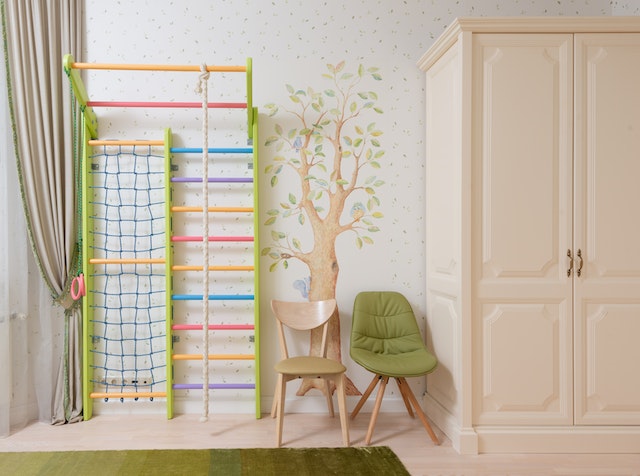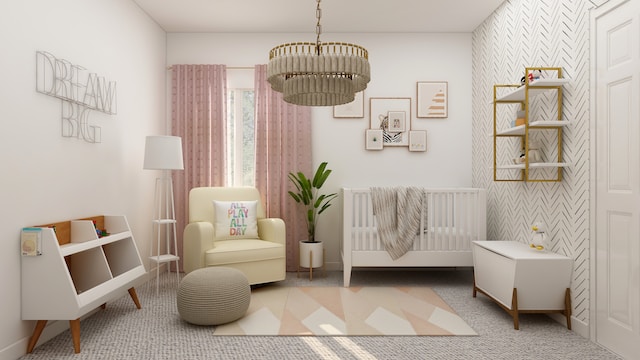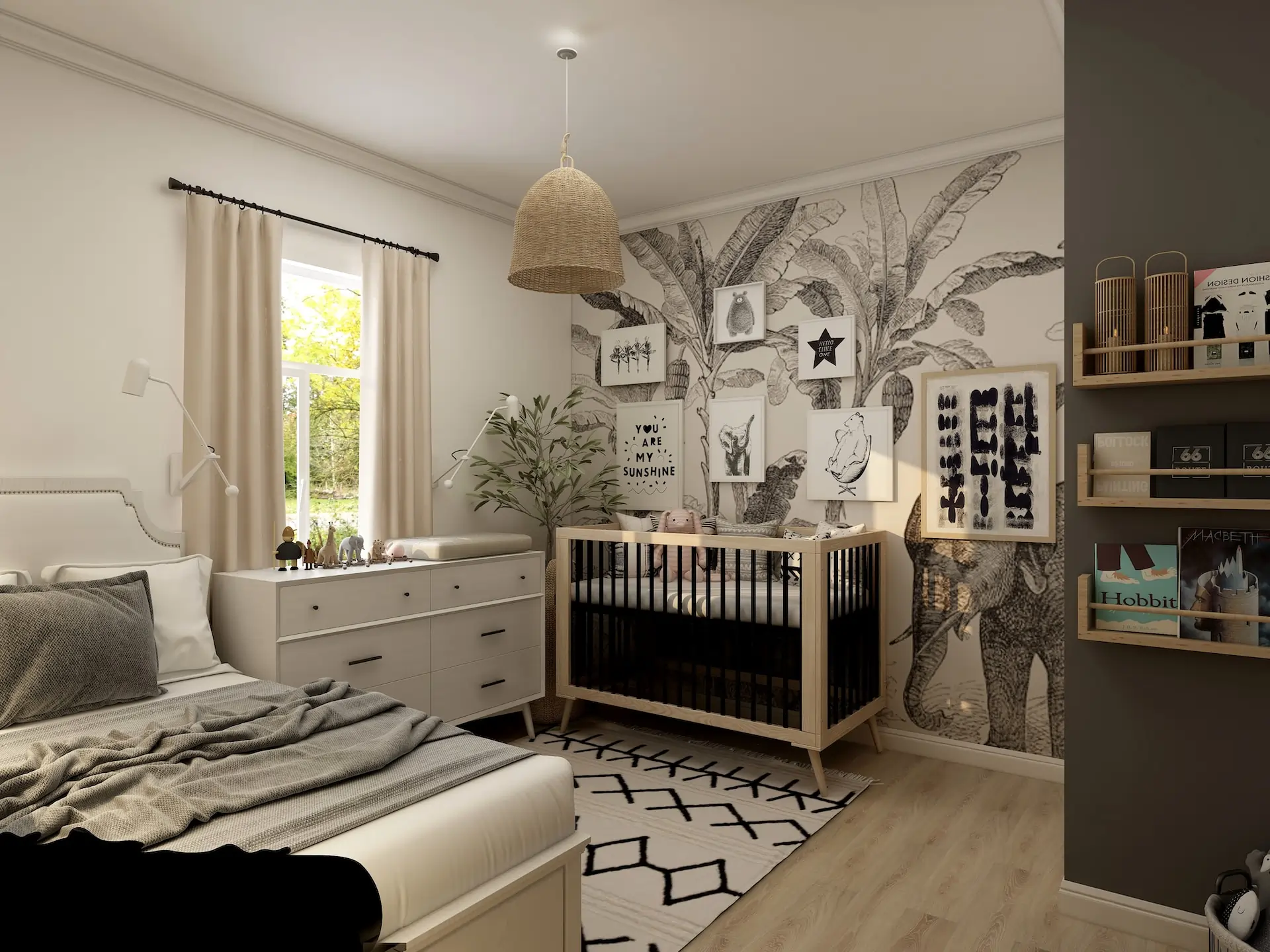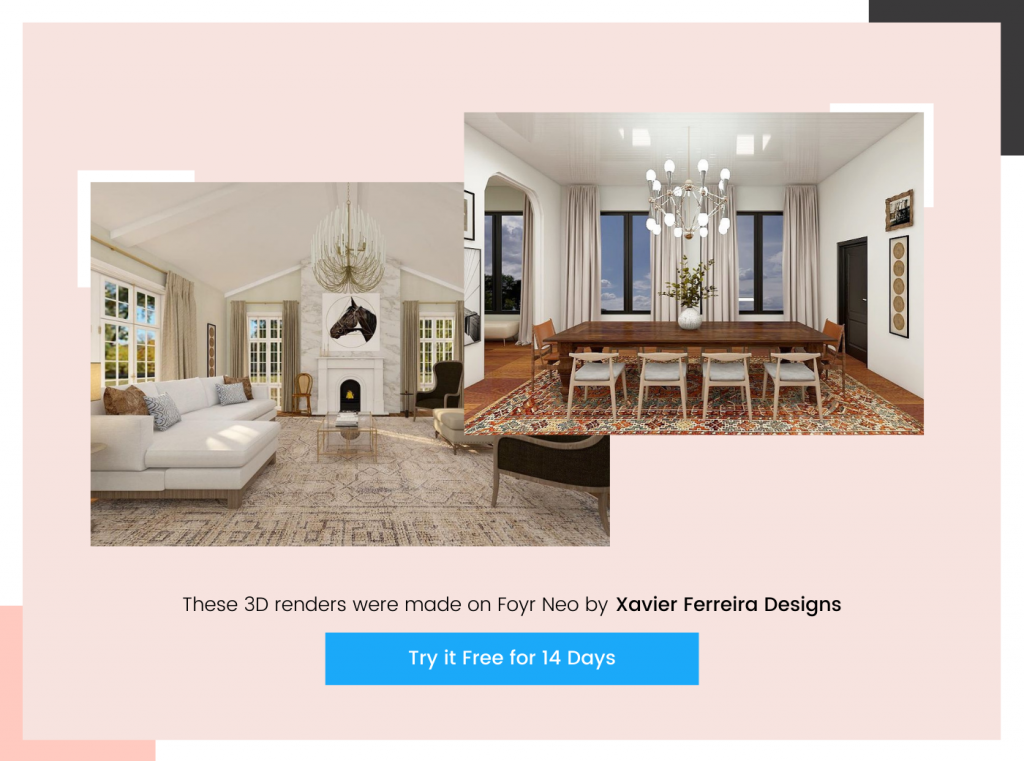Table of Contents
Becoming a parent is one of the best adventures one can go through as a human, and it’s filled with unexpected transitions, surprises, and emotionally and physically demanding tasks – all for a bundle of joy. In this critical time, new parents need everything by their side, to make their baby comfortable, feel safe, and loved in their baby room.
So, when they approach you to design their nursery room, what they say is that they want your finest creative ideas to make the place a haven for their baby. While that’s a huge part of your responsibility, yet another big area to focus on is the comfort and ease of the new parents in the nursery room. Using a kids room design tool can help you plan the layout more effectively making sure everything is within reach, safe, and suitable, Keeping these in mind while designing will render a successful and heartwarming design that parents will thank you for, even as the months go by.
In this blog, we’ll take you through every part of a child’s nursery room, how you design them, what materials to choose, and what precautions to take.
Assessing Client Needs and Essentials
Designing nurseries is a lot more different, and crucial than other areas of interior design, as it needs to be eco-friendly, sustainable, and completely healthy for the infant to grow in. You need to focus on the make, quality, texture, and just about everything for every element you infuse in the design.
Most parents take snapshots of the fancy images they see on social media, and Pinterest, and want to recreate their nursery ideas without looking at what products will go into creating that euphoric look for them. These are one kind. The other kind of parents have no clue whatsoever and are constantly panicking about it. As an expert interior designer, it’s your duty to cater to both kinds of parents. One of the first steps you could take is to assess what color the parents want in the nursery, and then evaluate the existing furniture they can use as nursery furniture. You can then ask them to show you pictures of their room decor ideas, choose the commonality between those pictures, and show a visual of them on top-notch design software like Foyr Neo.
New parents start planning their nursery rooms 4-5 months before the delivery, especially for essential items like cribs, mattresses, and dressers. Since some custom products take a lot longer to get delivered, you need to curate and deliver spot-on, accurate design ideas, give options, and finalize the most desirable versions all in a short span of time. Having a cloud-engine-run supertool like Foyr Neo will get your entire nursery room designed in a few minutes, and help you process any number of iterations to generate a photorealistic nursery room interior design.
Precautions to Keep in Mind Before Devising the Floor Plan of the Baby Nursery
Before you even embark on designing the floor plan or conceptualize what can go where there are a few things you need to be wary of:
- Kids grow fast, so make space in the room for items to be moved around, thrown out, or shifted.
- Avoid plastic toys and furniture at all costs. Children tend to put toys in their mouths, and you don’t want the tiniest bit of plastic to enter their bloodstream.
- Go for traditional wooden toys, tables, and nursery chairs.
- No floor lamps or electrical implants on the floor, where the little one would crawl.
- No TV in the nursery, or loud music in the kids’ room. They need absolute tranquility to get uninterrupted sleep.
- Avoid canopies on the crib, they run a risk of falling on the child.
- Stay away from too much fabric in the crib, and remove excess pillows, toys, or anything that could get in between the new baby and its sleep.
- Avoid fairy lights or string lights on the crib, or anywhere the child could get them.
- Don’t go overboard on the design. Design with a long-term view, and intentionally insert items that grow with the child. Choose the paint color palette with this in mind.
- Make the design functional for the current stage of the parents and the newborn’s life and endorse a personal touch to its crux.
Read also – How to Arrange Furniture in a Small Living Room: Space-enhancing Tips
Design Tips for the Nursery Decor
For any piece of furniture, first check if your client already has a relevant piece in their home, probably stacked away in their attic or basement. Ensure the pieces you recommend they buy also go well with the interior design of the rest of the house, so they can reuse it later on.
Walls and Wall Decor
If you’re using chemical or synthetic paint, give the nursery a lot of time to ventilate before populating it with things or bringing the baby in. Most chemical-based paints off-gas for a while before they settle down, and you don’t want the baby to inhale them. Advise plant-based, or clay-based paints for your clients. Studies say that the internal air quality is heavily deteriorated by paints, and ensure it doesn’t happen in the little one’s nursery room.
With respect to window treatment, enquire if the new parents would want to train their baby to sleep during the day, or at night only. Depending on this information, you can decide whether to completely blackout the windows or install draperies that partially block the natural light from entering. Wallpaper could be great for children’s rooms, however check what adhesive goes behind installing them, and what they’re made of. Try not to go with vinyl wallpaper. Recommend wallpapers made from wood fibers, and plant-based wallpapers with no chemicals or inks. You can also have an accent wall or a gallery wall to decorate with bright colors and pictures.

If your client is planning to have multiple children or resell the home in a few years, advise them to have a unisex theme for the nursery. Use stimulating colors, and a variety of gender-neutral nursery themes like celestial things, tribal patterns, forests, etc. Don’t delve deep into a gender-specific theme such as pink for a girl’s nursery and blue for a boy’s nursery. Keep it as neutral as possible, so that when the child grows up, and they want to change, your client doesn’t have to take the whole thing down.
If your client agrees, you can install ceiling art, as your newborn will spend most of their time looking up at the ceiling, and bright colors and patterns stimulate the brain like no other.
Choose plantain shutters, or wooden shutters for the nursery’s windows. Make sure to keep pulleys and ropes away from the reach of children. A fully draped wall is a thing of beauty but check with the parents before you add screens and other textiles to create the perfect nursery.
Read also – 28 Best Wall Decor Ideas To Decorate Your Blank Wall
Flooring
Most parents think carpeted floors are safe for their children, but surprisingly they aren’t. From the infancy stage, until they grow up, they’re going to use the carpet, pick items up from it and put them in their mouths, play on the carpet, fall down, and get exposed to it a lot. If they ingest the chemicals, their developmental milestones may be affected. As a designer, you need to double-check what material the infant will play on.
Steer clear of carpets, even if your client has a rather small space, they are hard to clean, get messy pretty quickly, and are hard to maintain. If your client is still hell-bent on going with a carpet, go for a stain-resistant, fire-proof carpet material, such as wool carpets, and check with the chemicals used in it.

Use wood flooring or reclaimed wood flooring, and check for its finishing. If your client has the budget, go for bamboo flooring – it’s a one-time investment that will pay off in the long run. Another ideal combination is to pair nursery rugs or area rugs with wood flooring. They are easy to clean, the child won’t trip over, and they’re totally safe.
Read also – Comparing Laminate Flooring Types, Pros, Cons, and Installation Tips
Dressers and Changing tables
Place the dresser under a window, that’s non-negotiable. Save tons of money and space for your client with this hack – don’t get a changing table or a baby wardrobe. Invest only in a great set of dressers whose top can be used as the changing table for the child. You can also store things needed for changing in the immediate sections in the dresser’s built-in drawers, and reserve the farther ones for occasionally used items.
On Foyr Neo, you can show the new parents the benefits of buying the dresser, the space it saves, and the purposes it serves, so they can head to the nearest IKEA and place an order. If your client’s budget is too stringent, look for other places to save. Just not the dresser. If they don’t buy a high-quality dresser, in about 4-6 years their drawers are going to be buckling, scratched, and ruined.
Remember to hang a mirror above the dresser, so that when the parent is done dressing the infant, they can hold them up to the mirror and give them a glimpse of themselves. Babies, baby girls, and baby boys love admiring themselves, and this could really create more such beautiful moments. Ensure to place a lamp to go with the dressers, so that the parent doesn’t have to turn on the entire room’s lighting to check on their baby at night.
Cribs
When you design space for cribs, allow for it to be changed into the headboard of the bed of a grown-up kid, so that the parents don’t have to splurge on a toddler bed again. You can match the color of the crib to that of the wall, and paint them in varying shades.
A word of caution while designing cribs – never put them anywhere close to a window. The baby would be heavily exposed to heat, light, and rain, which you don’t want. Also, avoid borrowing cribs from others in the friends’ circle or family, as there might be loose screws that you may not notice. You don’t want to risk anything.
Calming elements in the room
Include calming elements in the nursery, for the exhausted parent who’s checking in on the baby at night. When they’re there, what do they look at? Install soft glowing, unscented candles, or a calming piece of art near the crib.
For the baby, get a white noise machine that keeps reverberating the constant flowy sounds they heard inside the womb, so it’s easier for them to fall asleep. You can place a small bookshelf near the crib, or the dresser, to have rhymes or bedtime storybooks to read to the little one.
Read also – How to Create the Best Architect Portfolio in 2024
Lighting Ideas
When thinking about lighting for the nursery, think about sectional lamps that light up a particular area, so that the parents wouldn’t have to brighten the room too much to change a diaper in the wee hours of the night.

Place a lamp near the glider or rocker, to make sure there’s visibility on everything that’s nearby. Sometimes when the parent is rocking a child back and forth at night and gets up with the baby in hand, they might not notice if a toy is lying on the floor in front of them. For the comfort of the parent, you may also place a rocking chair in the baby nursery.
During playtime, if the parents want the child to get exposed to bright light, a chandelier is a delightful option to consider. Whatever lights you install, make certain that you install dimmer switches, it’ll be easier for the parents for midnight check-ins.
Read also – The Importance of Lighting in Interior Design
How Can Foyr Neo Help You Design Beautiful, Safe, Loving Nurseries?
A parent always wants the best for their child. A new parent, going through all the excitement and nervousness might be thrilled by different images they see on social media, but may not be able to vocalize them. The best way to get their wishlist granted is to show them options of the nursery they will live with in the near future and ask them to pick what resonates the most. Moreover, when the child reaches 3 years of age, they go through a lot of changes and might need the nursery to be changed. So, it’s wise to advise your client to invest in furniture and themes that don’t have to be modified much.
Foyr Neo helps you do that. You can create your own custom floor plan, or import it, easily drag and drop 50,000+ 3D elements to accurately depict your nursery, and check the performance of the colors, materials, and textures in different lighting, correct placement, or choice errors, and render exquisite nursery room designs in minutes. The best part is, that you can get all this and more for FREE if you sign up for the 14-day trial right now.
Head over to www.foyr.com to sign up instantly and get started on your fabulous design project right away.
FAQs
Guide them to choose the essentials first, and as they see the initial design take shape, they will gain confidence and get the secondary elements installed as well.
Not at all. You can design and construct a nursery on any budget.
Find a commonality in their preferences and include them in your design. If not, ask them to choose the 5 best pictures and make note of what impresses them the most and bring it into your design.











